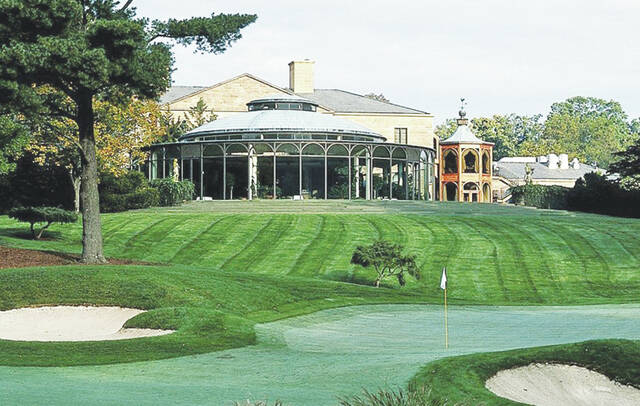In my last column I wrote about my short career as an estate gardener at Jasna Polana, the 200-acre Johnson estate near Princeton, New Jersey. I worked there less than a year, but I had experiences I will remember for a lifetime. Jasna Polana was modeled after a traditional European estate; some called it “the American Versailles” after the world-renowned French palace. Construction went on for years. The landscaping alone cost over three million dollars, and included 200-year-old shrubs and trees transplanted from several southern plantations acquired just for the old plants. In one area, old Magnolia trees were planted to shade a stately stone walkway. The trees did poorly, suffering from poor drainage. To save them, a construction team removed the newly-installed paving stones from around the trees, dug deep trenches to install drain tiles and gravel, and put the garden back together at tremendous cost. Construction equipment blocked off this area for weeks. A neighbor (heiress to the Warner-Lambert Pharmaceutical fortune) complained of being able to see the new mansion from her window. Johnson was sympathetic, so in response a wooded hillside was created using mature trees, some fifty feet tall, to create an instant screen. A giant spruce was trucked in on a flatbed tractor-trailer, a tree so heavy that a special construction crane had to be brought in to lift it into place. Voila! Instant woods! Glass-walled greenhouses on the estate produced orchids and other houseplants, which were then air-shipped to wherever the Johnsons were staying. The greenhouses provided culinary herbs, long-stemmed roses and other cut flowers, and a rotation of foliage plants from delicate ferns to huge banana trees for decorating the big house. They also grew vegetable seedlings for the estate’s three-acre organic vegetable garden. There was a sheep farm on the estate, since the Johnson’s were fond of sheep (and no doubt for the tax benefit of having the estate assessed as a working farm). The gardening staff was frequently called into action to round up the 100 or so sheep, and to clean soiled bedding out of the sheep barn. It was my first experience with sheep. They were greasy and smelly, and could knock you over in their frenzy if you weren’t careful. The formal gardens where I worked were adjacent to a downstairs “game room” the size of a high-school gym, with a dozen glass double doors opening onto a bentgrass bocce ball court. The ball court was as smooth and flat as a putting green, but larger than a baseball diamond, surrounded by terraced perennial gardens. Also on the ground floor was a special climate-controlled room filled with sliding racks, a “filing system” for storing the many original paintings in the big house. The Johnson’s lived and entertained there only one or two months each year, and the paintings were taken down and safely tucked away unless they were “in town”. The centerpiece of the main house was an indoor salt-water swimming pool in the classic Greek style, under a glass dome. Legend had it that the pool deck was originally paved with Vermont bluestone, cut and fitted so precisely that a dollar bill couldn’t slide into the seams between the individual stones. The story goes that Mrs. Johnson disliked the bluestone paving once it was finished, and insisted on having it removed and replaced with marble paving instead. All this opulence made a strong impression on me, having been raised in rural Deptford Township New Jersey under very modest circumstances. Estate homes like Jasna Polana are rarely built today, and most homes of this scale eventually become public attractions like Longwood Gardens, Winterthur Museum and the Biltmore Estate. After Mr. Johnson’s death, Jasna Polana was sold to PGA Tour Inc. and converted for use as a
Tournament Players Club world-class golf course. A Google image search will reward you with hundreds of photos, mostly of the golf course and special events there. It’s worth a look.
Steve Boehme is a landscape designer/installer specializing in outdoor living spaces. “Let’s Grow” is published weekly; column archives are online at www.goodseedfarm.com. For more information call GoodSeed Farm Landscapes at (937) 587-7021.






